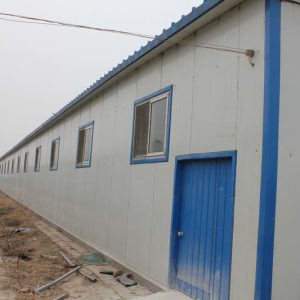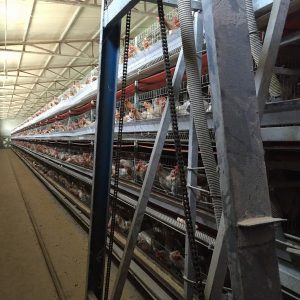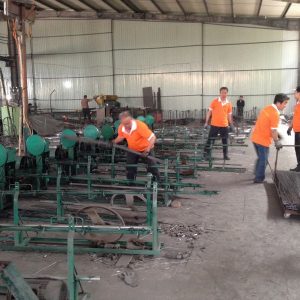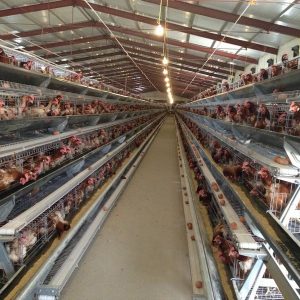
Essentials of rural free-range chicken technology, you must master
How to raise free-range chickens in rural areas? Free-range chickens are a way for farmers to rationally use the natural environment for chicken breeding. Chickens raised in this way are very popular in the market. Free-growing chickens have a short growth cycle, fast capital turnover, and profitable profits. Free-range chickens have a great advantage in terrain, so you must master the technical points of free-range chickens.
Matters needing attention in rural free-range chickens
1. Key points to build chicken houses and buy seedlings
First of all, you should choose a breeding farm. It is recommended that you choose to farm in the garden. If you raise it in the garden, there is a natural environment. Therefore, it is very suitable. To expand the scale, of course, experienced farmers can ignore it. This is just to reduce everyone’s losses. If you buy seedlings, it is best to buy high-quality chicks in the first year.
2. Point 2 Drinking water and diet
After the chicken coop is built, it is the daily diet management. The staple food is mainly corn kernels and rice. It is usually put outside. It will eat it by itself. Add water to the water dish on time to make it have enough water. You can also put some green leaves and other foods to eat it to supplement the balance and comprehensiveness of nutrition to meet its growth and development needs.
3. Point 3 Vaccination
It is very important to vaccinate chickens. Chicken plague and chicken disease are easily outbreaks in the farm, so every chicken must be vaccinated regularly, and the chickens must be dewormed regularly to ensure the smooth growth of the chickens.
4. Point 4 Daily life
Normally let the chickens grow their natural life. In autumn and winter, they can stay in the chicken coop more. At other times, try to let them move out. Try to move freely in the garden or farm. You must take precautionary measures against the threats, otherwise it will result in quantitative losses.
Brooding stage
1. Temperature: After the chicks are bought out of the shell, the temperature in the first week should be controlled within 34-35 ° C. From the second week, the temperature should be reduced by 2 ° C every week until the temperature is removed in the sixth week. The method of heat preservation depends on the number of chickens. Fewer chickens can use cartons and bulbs, that is, put the chicks in the box, hang a 60W light bulb, and put a water bottle and a trough at the same time. Most chickens can be used in brooding rooms, indoor heating with coal stoves, etc., but soot should be discharged outside using iron pipes. In order to ensure the accuracy of the temperature, in addition to observing the status of the chicks, a thermometer should be hung indoors, and the feces should be removed at the same time.
2. Light: 24 hours of light are required in the first week of brooding to ensure that the chicks can eat and drink water day and night to promote growth and development, and then reduce by 2 hours per week until the lights are not turned on at night. Light and heat can be combined. Carton brooding. If the temperature is not enough, add water to the container and wrap it with cloth, then put it in the box to heat it.
3. Density: 1 to 14 days old, 50 to 60 animals / m2, 15 to 21 days old to 35 to 40 animals / m2, 21 to 44 days old to 25 animals / m2, and 12 to 60 days old Meter. The chicks can be kept in cage, flat or grazing after the temperature is removed, as long as the density does not exceed the above standards.
4. Drinking water: The chicks can drink water for feeding 24 hours after they are out of the shell, put the brood material in the bucket to let them eat freely, and put clean water in the water cup. Drink cold water for the first 20 days of brooding. You can drink well water or tap water in the future. Due to the small feed intake of chicks and strong metabolism, in order to prevent malnutrition, 8-10% glucose and water soluble must be added to the water in the first 10 days Vitamins.
Dewarming
1. Cage rearing: Transfer the dechilled chicks to rearing in a chicken cage. The advantage is that they can make full use of the space. The chickens do not touch the feces, and the incidence is less. At the same time, it is easy to catch the chickens and reduce the labor intensity of the breeders. The disadvantage is that the chickens that have been reared for a long time have a greater stress response, and the chicken’s chest and legs are prone to lesions.
2. Flat raising: Flat raising can be divided into online raising and ground raising. Online raising is the same as cage raising, but the amount of activity of chickens is large and it is not easy to get sick. Of course, the cost is higher. The achievement of ground raising on the ground is to put wheat straw, chaff, rapeseed hulls, etc. on the cement floor to the litter, and put the chicks on it. The advantage is to save costs, and the chicken’s chest and legs are less likely to develop diseases. The amount is large, and the litter does not need to be replaced. The disadvantage is that the chickens defecate directly on the litter, which is easy to induce some diseases.
3. Stocking: Put the chicken outdoors in the morning, let it be exposed to sunlight, contact with the soil, at the same time can find some mineral feed and insects, and rush the chicken back to the house at noon and evening to feed it. To return the chicken to nature, the meat quality of the chicken is very good, and the price is high. The disadvantage is that the required space is large, so the scale of breeding is limited. This method is suitable for small-scale farming.
Aquaculture management
1. Feeding and feeding: A small number of times are usually used during the production time to stimulate the chicken’s appetite for feeding, so feed no less than 5 times a day during the brooding period, and the number of feeds should not be too large. After the chicken has finished eating, the bucket is left empty for a period of time before adding the next feed.
2. Adding materials and adding sand: There must be a transition when changing the chicken material. It usually takes three days to complete the process. Feed 70% original chicken feed and 30% new chicken feed on the first day, 50% original chicken feed and 50% new chicken feed on the second day, and 30% original chicken feed and 70% new chicken feed on the third day. Feed all new chicken feed for 4 days. After 20 days of age, 500 grams of clean, fine sand is provided per 100 chickens per week, and no additional sand is required for stocking.
3. Group feeding: the strong and weak groups and male and female group feeding should be carried out. For the rooster, increase the thickness of the litter and increase the level of dietary protein and lysine. Roosters grow faster and have higher requirements on feed nutrition. The purpose of increasing nutrition is to meet their needs in order to market in advance.
4. Ventilation of the chicken coop: The chicken coop is well ventilated, especially in summer, it is necessary to create conditions for the chicken coop to have convection winds. Even in winter, proper ventilation should be performed to keep the air in the house fresh. The well-ventilated chicken coop is not stuffy, dazzling or pungent when people enter.
5. Proper density: If the density is unreasonable, it is difficult to breed high-yielding chickens even if other feeding and management work is good. In the case of rearing in the rearing period, the appropriate density per square meter is 8 to 10 animals aged 7 to 12 weeks, 8 to 6 animals aged 13 to 16 weeks, and 6 to 4 animals aged 17 to 20 weeks.
6. Reduce stress: Daily management should be carried out in strict accordance with the operating procedures, and try to avoid the interference of external bad factors. When catching a chicken, you should not be rough. Be cautious when vaccinating. Do not suddenly appear in the flock wearing special clothes to prevent the flock from affecting the normal growth and development of the flock.



